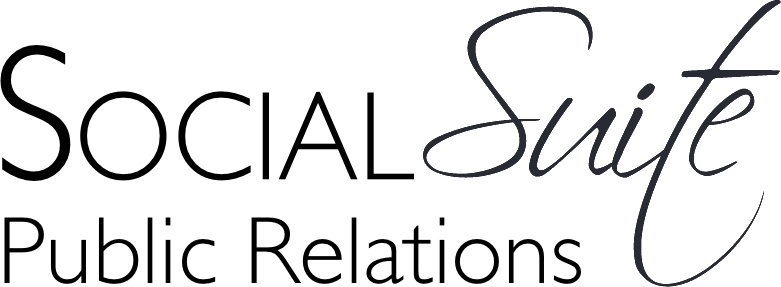An Etiquette Guide for Interacting With Journalists on Social Media
March 16, 2015/Featured by Jim Dougherty, CisionPoint
Best Practices

One of the most disruptive things to happen to the PR profession in recent history has been the mass adoption of social media. In fact, one study suggests that over 96 percent of journalists use social media every day.
Almost all journalists use Twitter, nearly everyone in the civilized world is on Facebook, 92 percent of journalists are purported to be on LinkedIn, and any number of journalists and influencers are using any social network at any given time. Social media offers access to anyone else on it (more or less), which means that every PR practitioner and communications aspirant can interact with journalists or influencers.
What I want to do in this post is to vet conventional wisdom about how PR practitioners should use social media to communicate with journalists. In each instance I separate “pitches” from usual interaction, and the reason for this is that there are some social networks where it is appropriate to interact but not to pitch.
One note about PR pitches: although I explore the appropriateness of pitching via different social networks here, I want to note that journalists prefer email and phone pitches by a large margin (according to this survey). And contrary even to that survey, there are many journalists that object to phone pitches as well. Email may be the most effective means to do most PR pitches, which I imagine you know already as you read the Cision blog.
The capability to pitch on social media doesn’t mean that a social pitch will be as effective as an email pitch. Sean Donnelly of Hypertext writes about why social pitches aren’t perceived as favorably as email pitches:
The general sentiment from reporters was that they prefer not to be pitched via Twitter, Facebook, LinkedIn, or any other social platforms at all. Rationale for this stance ranged from social media being too hard to keep track of, to journalists preferring their competition and other story sources not to see who they’re working with.
And as a final point, social media PR pitches probably are happening much less frequently than the blogosphere might lead you to suspect. One survey of PR professionals concluded that only 13 percent of PR practitioners are pitching on social.
TWITTER
Twitter Media Outreach
Twitter’s low-barrier-to-entry and high (journalist) adoption makes it a very appealing medium to interact with journalists and influencers. Twitter timelines can also give you a sense of a journalist’s interest and focus. Tweets can also direct you to a writer’s off-site content. The low character count makes it less likely that you’ll wear out your welcome with a time-constrained writer.
Should I socialize with journalists and influencers on Twitter?
YES! Twitter is the ideal platform where journalists and influencers aren’t isolated into social circles and where many are open to regular interaction.
Lori Russo of Stanton Communications writes that Twitter may be the most useful social network for researching a journalist’s beat and their interests:
Social channels, specifically Twitter, are rich with opportunities to learn about what individual reporters are covering, or which reporters are covering a specific topic.
The logical progression of this research can be interaction around a journalist’s shared content.
Should I pitch journalists and influencers on Twitter?
If you have to. One survey suggests that Twitter is overused for PR pitches, while LinkedIn may be a more appropriate social media platform to pitch on. We can also deduce from this that some journalists may be open to Twitter pitches.
Allie Gray Freeland of iAcquire writes that there are six things that you can do to make your Twitter pitch more successful:
- Make sure your Twitter profile is complete.
- Establish yourself as a thought leader.
- Create media lists through Twitter lists.
- Engage with the journalists on your Twitter media list.
- Once you’ve socially engaged with the journalist, pitch them.
- Follow up.
GOOGLE+
Google+ Media Outreach
Let’s caveat this by saying that Google+ is in the midst of a split into separate products, so if this is dated upon publication know it was true at one point. That said, Google+ mainstreamed the long-form social posting that LinkedIn has since adopted. This allows for elaboration that wouldn’t be as appropriate for Twitter or Facebook.
A lot of the available information on journalists and G+ is dated, so the success of engagement and pitches would depend upon the activity of a journalist or influencer on the network.
Should I socialize with journalists and influencers on Google Plus?
Yes. Not as many people actively use G+ as use other networks so engaging a journalist or influencer on Google Plus may be a way to get better access than on a network like Twitter.
Should I pitch journalists and influencers on Google Plus?
Probably not. If a journalist or influencer is using Google Plus, odds are that it is tied to their personal Gmail account (which you can message directly from G+). It’s generally perceived as poor practice to pitch to personal account (which is why Facebook is off limits). Odds are that you can get a business email from the Cision database and transition your social conversation to an email pitch.
LINKEDIN
LinkedIn Media Outreach
Up to 92 percent of journalists may have LinkedIn accounts. This is great news, except that LinkedIn has poor engagement and time on-site relative to other social networks. In other words, having a profile doesn’t mean that you use it.
So, the Google Plus rules apply: qualify journalists and influencers as active before engaging them on LI.
Should I socialize with journalists and influencers on LinkedIn?
Yes (ish). LinkedIn is a professional network. You can follow journalist feeds and comment on their posts, but there probably isn’t going to be as much opportunity for the off-topic or personal engagement that Twitter might provide.
Should I pitch journalists and influencers on LinkedIn?
Yes. One survey suggests that LinkedIn would be the preferred social network to pitch on. It’s discreet, gives journalists an opportunity to vet you, and is as direct as an email.
For more considerations for a LinkedIn PR pitch, you can read this piece I wrote for the Cision blog.
BLOGS / TUMBLR
Blog Media Outreach
Most writers have a blog of some sort. They may write about their specialty or about off-topic stuff that they’re not able to write about professionally. Some publications (like my hometown Cincinnati Enquirer) encourage their journalists to interact with web content as well.
Tumblr is one of the fastest growing social networks in the 18-24 year old demographic, and is a hybrid visual blogging platform. (For an example of the utility of Tumblr and of twenty-something perceptions of the PR profession check out Young Journalist Problems)
Blogs and Tumblr pages are popular way to self-publish. Journalists and influencers may contribute to one and possibly many of these pages.
Should I socialize with journalists and influencers on their blogs or on Tumblr?
Sure. You’re consuming content that doesn’t benefit from a lot of distribution, and generally it’s content that the writers are quite passionate about.
Should I pitch journalists and influencers on their blogs or on Tumblr?
No. Blogs and Tumblr pages are both public and (in all likelihood) personal, making pitches on either inappropriate.
FACEBOOK
Facebook Media Outreach
Facebook is for friends, and friends don’t pitch friends. – Zoe Fox, Mashable
Facebook is THE social network. Everyone is there. Everyone spends a lot of time on there. You’d probably think this would be a great place to interact with journalists. You would be wrong.
People don’t use Facebook for work. They use it because it is the richest peer network that they maintain. I post pictures of my kids there. My wife posts pictures of her travels there. We don’t take pitches or discuss work there.
Just like personal email, you should avoid trying to infiltrate closed personal social networks to make inroads with journalists or influencers. Odds are this will be perceived as an invasion of privacy.
Should I socialize with journalists and influencers on Facebook?
No. Unless you are personal friends.*
*Journalist must concur that you are personal friends to enable this caveat.
Should I pitch journalists and influencers on Facebook?
No.
INSTAGRAM
Instagram Media Outreach
Instagram is an awesome visual media platform. It is growing, easy to use and manage, looks phenomenal, and is perfect for mobile usage.
Should I socialize with journalists and influencers on Instagram?
Sure. Instagram is a great network to get a feel for people’s priorities and interests. AND Instagram is an open network, so it is a more appropriate place to interact personally with someone who doesn’t know you well (as opposed to Facebook).
Should I pitch journalists and influencers on Instagram?
Nope. (See Facebook)
Conclusion
There are many completely appropriate ways to interact with journalists on social media. There are many ways that you can sabotage a professional relationship using social media inappropriately, too. If you find you are in doubt:
– Don’t try to interact on private networks such as Facebook
– Use social media to appropriately research and interact with journalists and influencers. Be sensitive to privacy issues always.
– Use email pitches whenever possible, and LinkedIn if you need to pitch on social.
Social media platforms are powerful, but don’t use them to replace something tried and true. Consider this one last thought:
“5 percent of participants prefer being pitched via social media and 6 percent prefer the phone. The vast majority (89 percent) still want to be pitched via email.” – Blaise Lucey, March Communications
Tags: media outreach, pitching, slow pr, social media
About Jim Dougherty
Jim Dougherty is a featured contributor to the Cision Blog and his own blog, leaderswest. His areas of interest include statistics, technology, and content marketing. When not writing, he is likely reading, running, playing guitar or being a dad. PRSA member. Find him on Twitter @jimdougherty.

